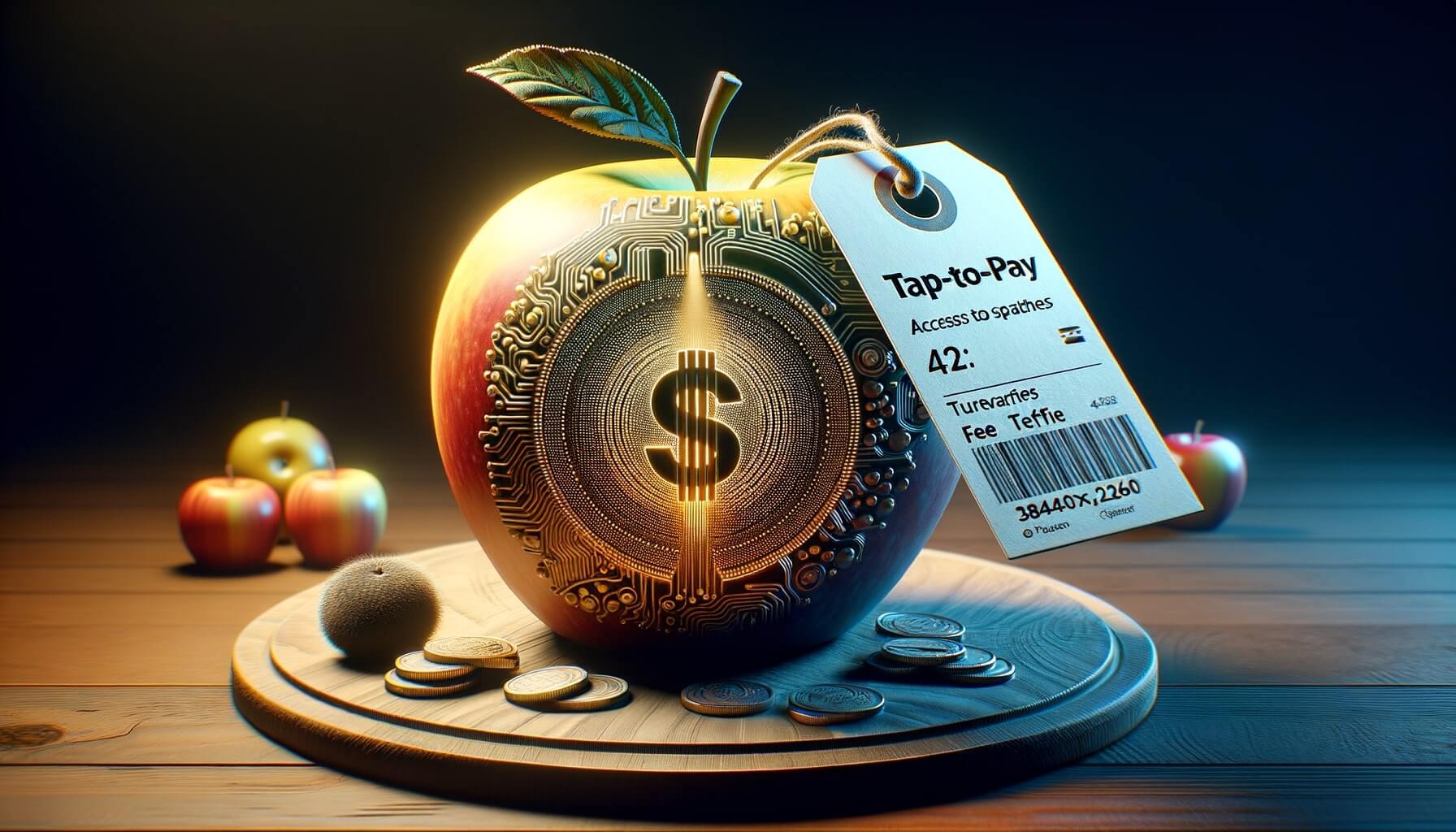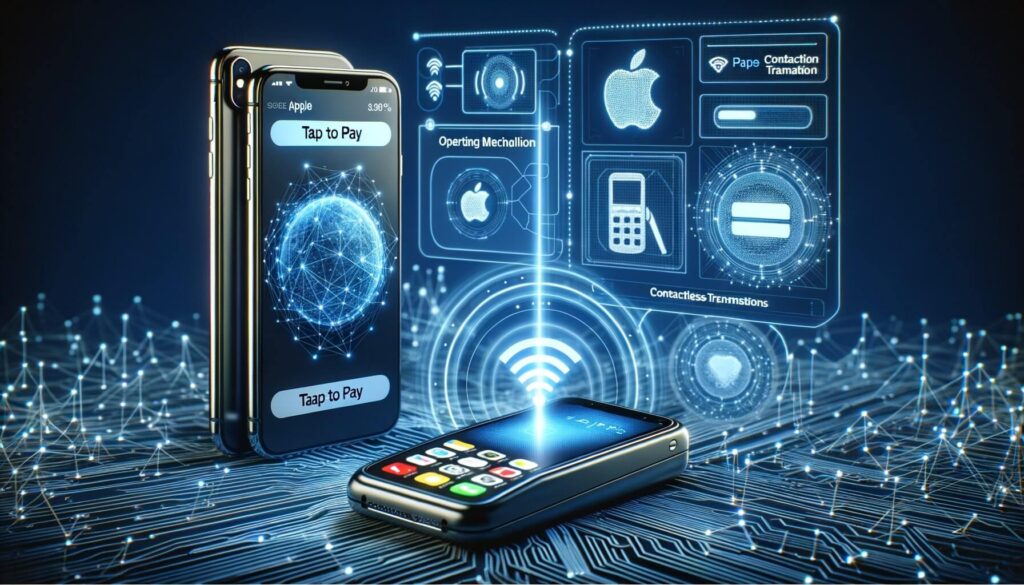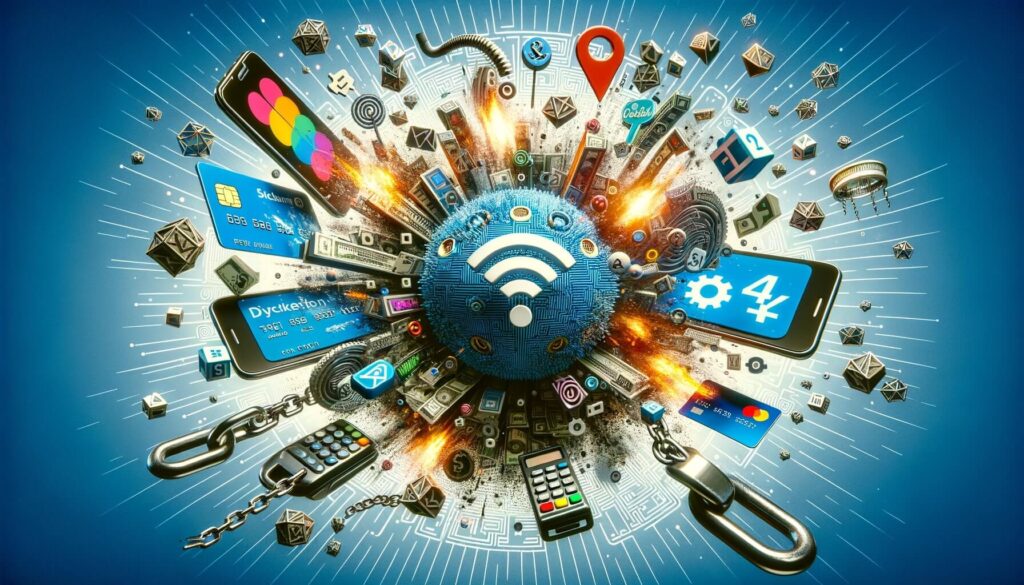
By DonnaELopez May 10, 2025
Apple has long been a pioneer in the world of technology, constantly pushing the boundaries of innovation and setting new standards for user experience. One of the latest developments from the tech giant is the opening of tap-to-pay access to third parties, a move that has the potential to revolutionize the way we make payments.
In the past, Apple’s tap-to-pay system was limited to Apple Pay, the company’s own mobile payment platform. However, with the recent announcement, third-party developers and businesses will now have the opportunity to integrate their own payment systems with Apple’s tap-to-pay technology, opening up a world of possibilities for consumers and businesses alike.
This article will explore the ins and outs of Apple’s tap-to-pay access for third parties, including how the system works, the benefits and potential drawbacks, how third parties can integrate with the system, the associated fees, security measures in place, and more. By the end of this comprehensive guide, you’ll have a thorough understanding of this exciting new development in the world of mobile payments.
How Apple’s Tap-to-Pay System Works

Apple’s tap-to-pay system is built on Near Field Communication (NFC) technology, which allows devices to communicate with each other when they are in close proximity. This technology is what enables users to make contactless payments by simply tapping their device on a compatible terminal.
When a user taps their device to make a payment, the device sends a unique token to the terminal, which then processes the payment securely. This token is a one-time code that is generated specifically for that transaction, adding an extra layer of security to the payment process.
With the opening of tap-to-pay access to third parties, developers and businesses can now leverage Apple’s existing infrastructure to enable their customers to make payments using their own apps or services. This means that users will have more options when it comes to making payments, and businesses will have a new way to engage with their customers and streamline the checkout process.
Benefits of Apple Opening Tap-to-Pay Access to Third Parties

For businesses, the ability to integrate with Apple’s tap-to-pay system means access to a larger customer base and increased opportunities for engagement. By offering a seamless payment experience, businesses can improve customer satisfaction and loyalty, ultimately driving sales and revenue.
Additionally, opening tap-to-pay access to third parties can spur innovation in the mobile payment space. With more developers and businesses entering the market, we can expect to see new features, services, and technologies that enhance the overall payment experience for users.
Potential Drawbacks of Apple’s Tap-to-Pay Access for Third Parties

While there are many benefits to Apple opening tap-to-pay access to third parties, there are also potential drawbacks to consider. One concern is the potential for increased competition and fragmentation in the mobile payment space. With more players entering the market, users may be faced with a multitude of options, making it difficult to choose the best payment method for their needs.
Another potential drawback is the risk of security vulnerabilities. As more third-party developers integrate with Apple’s tap-to-pay system, there is a greater chance of security breaches or data leaks. It will be crucial for Apple and third-party developers to prioritize security and implement robust measures to protect user data and transactions.
Additionally, there may be challenges in terms of compatibility and interoperability between different payment systems. As third parties develop their own payment solutions, ensuring seamless integration with Apple’s tap-to-pay system will be essential to provide a smooth and consistent user experience.
How Third Parties Can Integrate with Apple’s Tap-to-Pay System

Integrating with Apple’s tap-to-pay system is a straightforward process for third parties. Developers can leverage Apple’s APIs and SDKs to build their own payment solutions that are compatible with Apple’s infrastructure.
One option for integration is through Apple’s Wallet app, which allows users to store payment cards, boarding passes, tickets, and more in one convenient location. By integrating with the Wallet app, third parties can offer their customers a seamless payment experience that is secure and easy to use.
Another option is to use Apple’s Core NFC framework, which enables developers to read NFC tags and interact with NFC-enabled devices. By leveraging this framework, third parties can enable tap-to-pay functionality within their own apps, giving users the ability to make contactless payments using their preferred payment method.
Overall, integrating with Apple’s tap-to-pay system opens up a world of possibilities for third parties, allowing them to offer innovative payment solutions that enhance the overall user experience.
Fees Associated with Third Parties Using Apple’s Tap-to-Pay Access
While Apple has not disclosed specific details about the fees associated with third parties using its tap-to-pay access, it is likely that there will be some costs involved. Typically, payment processors charge a fee for each transaction processed through their system, which may vary depending on the volume of transactions and other factors.
In addition to transaction fees, third parties may also incur costs related to integration and maintenance of their payment solutions. This could include development costs, testing expenses, and ongoing support and updates to ensure a smooth and secure payment experience for users.
It will be important for third parties to carefully consider the financial implications of integrating with Apple’s tap-to-pay system and to weigh the costs against the potential benefits and opportunities for growth.
Comparison of Apple’s Tap-to-Pay System with Competitors
Apple’s tap-to-pay system is not the only player in the mobile payment space. Competitors such as Google Pay, Samsung Pay, and PayPal also offer contactless payment solutions that are popular among users.
One key advantage of Apple’s tap-to-pay system is its seamless integration with Apple’s ecosystem of devices and services. With a large user base of iPhone, iPad, and Apple Watch users, Apple has a built-in audience for its payment solutions, making it a convenient choice for many consumers.
In comparison, Google Pay is widely used on Android devices and offers similar contactless payment capabilities. Samsung Pay, on the other hand, leverages both NFC and Magnetic Secure Transmission (MST) technology to enable payments on a wider range of terminals. PayPal is a popular choice for online payments and offers a range of features for both consumers and businesses.
Ultimately, the best mobile payment solution will depend on the individual needs and preferences of users. Each platform has its own strengths and weaknesses, so users should consider factors such as device compatibility, security features, and ease of use when choosing a payment method.
Security Measures in Place for Apple’s Tap-to-Pay System
Security is a top priority for Apple, especially when it comes to handling sensitive payment information. Apple’s tap-to-pay system incorporates several security measures to protect user data and transactions.
One key security feature is tokenization, which generates a unique token for each transaction that is processed through Apple’s system. This token is used in place of the user’s actual payment card information, reducing the risk of fraud and unauthorized access to sensitive data.
In addition to tokenization, Apple’s tap-to-pay system also utilizes biometric authentication, such as Touch ID or Face ID, to verify the user’s identity before processing a payment. This adds an extra layer of security to the payment process and helps prevent unauthorized transactions.
Furthermore, Apple employs encryption to secure data transmitted between devices during a payment transaction. This ensures that sensitive information is protected from interception or tampering by malicious actors.
Overall, Apple’s tap-to-pay system is designed with security in mind, incorporating multiple layers of protection to safeguard user data and ensure a safe and secure payment experience.
Frequently Asked Questions about Apple’s Tap-to-Pay Access for Third Parties
Q1. Can any third-party developer integrate with Apple’s tap-to-pay system?
Answer: While Apple has opened tap-to-pay access to third parties, developers will need to meet certain requirements and guidelines to ensure compatibility and security.
Q2. What fees are associated with using Apple’s tap-to-pay system?
Answer: Apple has not disclosed specific details about fees, but third parties can expect to incur costs related to transaction processing, integration, and maintenance.
Q3. How does Apple’s tap-to-pay system compare to competitors like Google Pay and Samsung Pay?
Answer: Each mobile payment platform has its own strengths and weaknesses, so users should consider factors such as device compatibility, security features, and ease of use when choosing a payment method.
Q4. What security measures are in place to protect user data and transactions with Apple’s tap-to-pay system?
Answer: Apple’s tap-to-pay system incorporates tokenization, biometric authentication, and encryption to ensure the security and integrity of payment transactions.
Q5. How can businesses benefit from integrating with Apple’s tap-to-pay system?
Answer: By integrating with Apple’s tap-to-pay system, businesses can offer their customers a seamless payment experience, access a larger customer base, and drive sales and revenue.
Conclusion
In conclusion, Apple’s decision to open tap-to-pay access to third parties represents a significant step forward in the world of mobile payments. By enabling developers and businesses to integrate with its tap-to-pay system, Apple is paving the way for increased convenience, flexibility, and innovation in the payment space.
While there are many benefits to Apple’s tap-to-pay access for third parties, there are also potential drawbacks to consider, such as increased competition, security vulnerabilities, and compatibility challenges. It will be important for Apple and third-party developers to work together to address these issues and ensure a smooth and secure payment experience for users.
Overall, Apple’s tap-to-pay system offers a secure and convenient way for users to make contactless payments, whether through Apple Pay or third-party apps. With robust security measures in place and a focus on user experience, Apple is poised to continue leading the way in mobile payments and shaping the future of digital commerce.